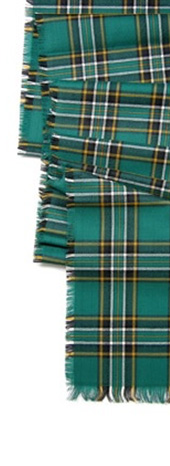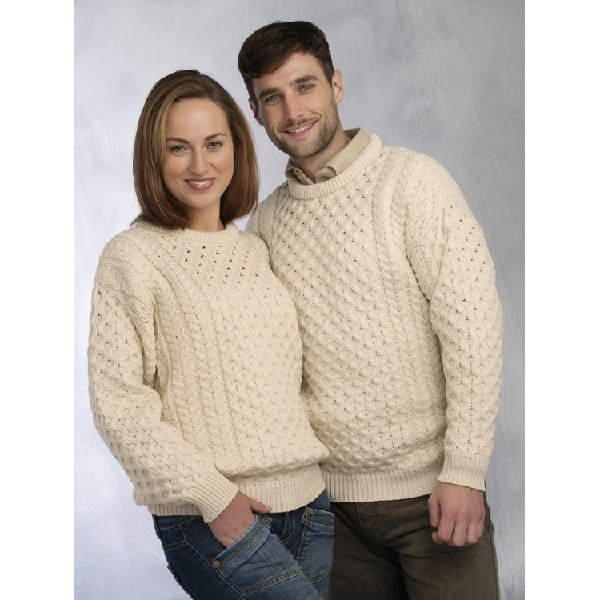Uncategorized
The Aran Sweater
Originally posted October 8, 2012.
The Aran sweater name originates from the tiny community of the Aran Islands off the mouth of Galway Bay. These ancient islands have stark exposure to the elements with no trees and few sheltered places. As a result, the weather can be atrocious.
Until the 1920s, the islanders had to be self-sustaining; there was very little contact with the outside world. Besides growing all their own food, the islanders even knit their own socks. Over the years, Aran knitters became very proficient with stitches. Sweaters were knit meticulously as they represented the family;

a woman could spent months perfecting her Irish Aran sweater.
It was primarily the wives of island fishermen who knitted the sweaters before local knitters began selling their products, as this small island community with no industry needed some way to generate income. Originally the sweaters were knitted using unscoured wool that retained its natural oils (lanolin) which made the garments water-resistant and meant they remained wearable even when wet.
Over the years, Irish Aran sweaters have grown tremendously in popularity. The variety of stitches carry charming names. There are literally hundreds of combinations that can be used to produce an Aran sweater design.
The traditional Aran sweater needs two things. It has to be made of untreated wool, since the sheep’s wool had natural oils to protect it from the weather. Second, an Irish Aran sweater should use authentic stitches, like the blackberry and honeycomb.
Today’s Aran sweaters retain the best of the tradition while expanding beyond untreated wool and using super soft Merino wool, linen, cotton and other fibers. Contemporary style trends have also made their mark, allowing the wearer to be as fashion forward as they desire while still maintaining the integrity of the Aran tradition.
See our Aran Sweaters.



